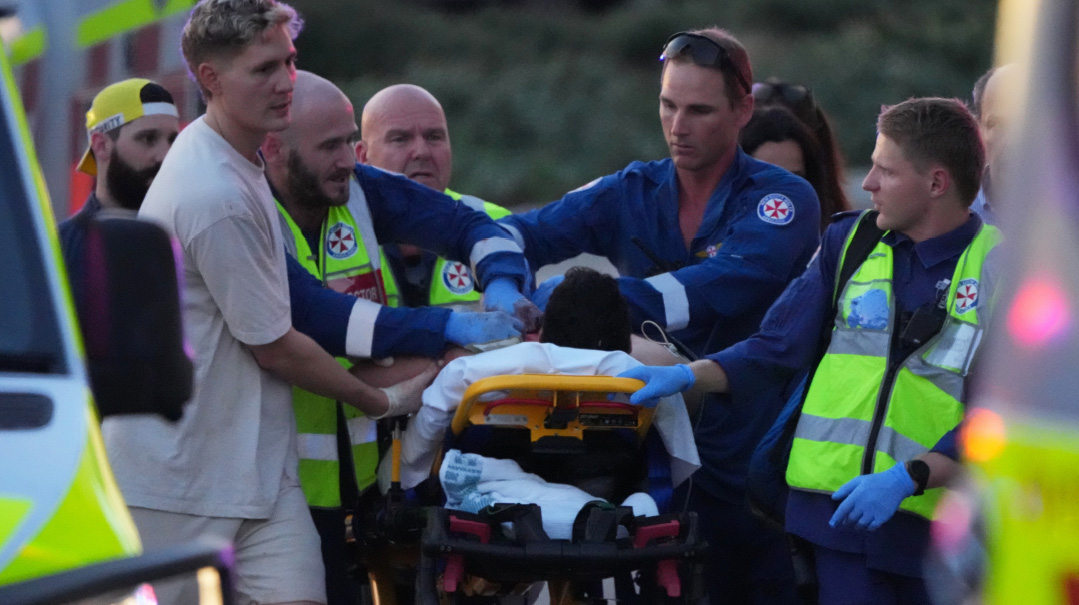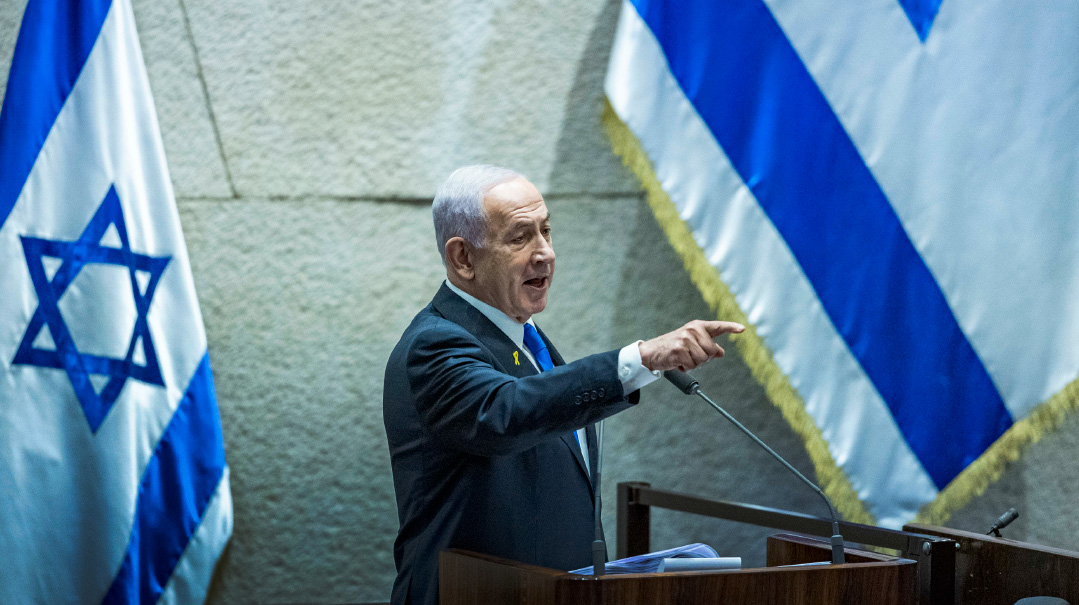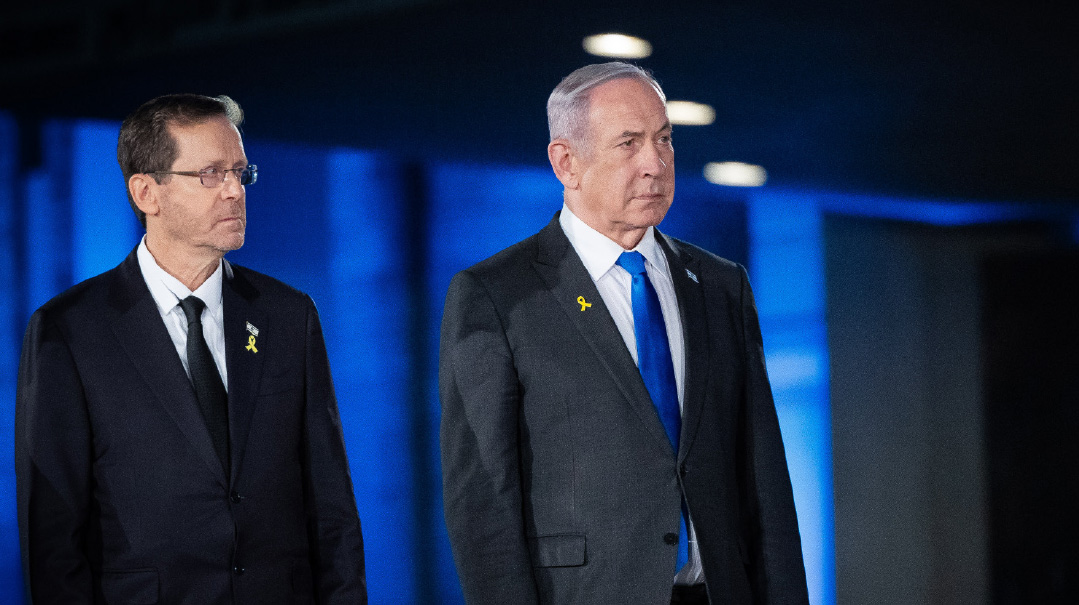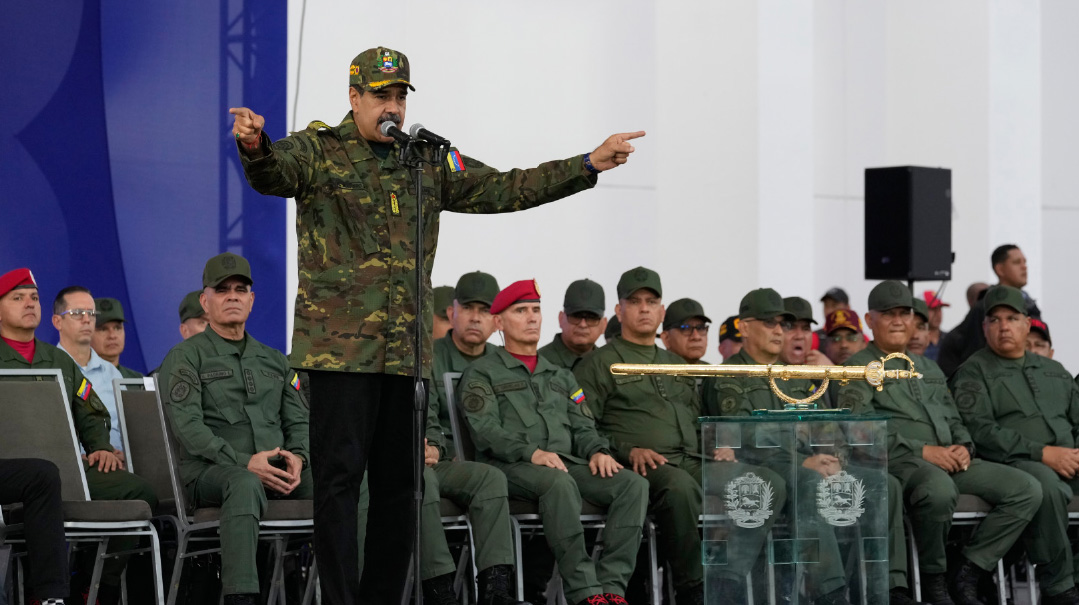The Writing on the Wall
| November 7, 2023As Hamas trained, IDF spotters warned of what they were seeing
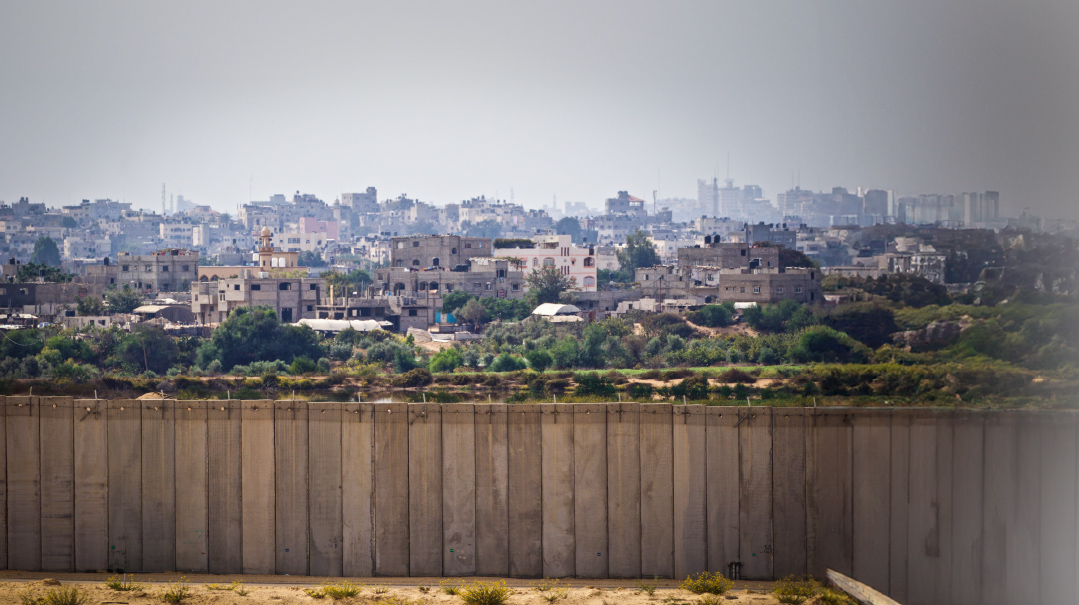
Photo: Flash90
When IDF troops rescued Private Ori Megidish from Hamas captivity in an overnight operation in Gaza last week, it was cause for a rare moment celebration in a grim war.
But it also drew attention to Israel’s field intelligence battalions — units staffed mainly by women soldiers who have the demanding job of training their watchful eyes on nearly every point along the country’s borders, through security cameras and at watchtowers.
Because they are stationed literally on the front lines facing Israel’s enemies, these observers’ jobs come with considerable risk. And in the horrific Hamas attack on Simchas Torah, the field observers at the Gaza perimeter fence were among the first to be murdered or taken captive.
The scale and sheer audacity of the attack took the country by surprise. But three former IDF field observers, identified here as N., S., and R., tell Mishpacha that although the attack was shocking, neither they nor their friends were surprised in the least. They say that they had been ringing the alarm bells constantly until their service ended a few months ago — but somewhere along the chain of command, their reports were not taken seriously.
“It happened early in the morning, about four months ago, around 5:45,” recounts N. “It was almost always in the morning. We knew the planned invasion would come in the morning, we knew the weak points they would come through, which yishuvim they would target. We knew everything. That morning four months ago, uniformed [Hamas] Nukhba soldiers showed up, marked a spot relatively close to the fence, and started counting steps. After about an hour, they opened up maps and started marking things, both on the ground and on the maps, all the while looking at a particular spot on the fence that we knew was vulnerable. After they finished, they just folded up their maps and left.”
She reflects in bewilderment on the sense of false security that prevailed before October 7 in the country at large. But in the army, at least, there was some recognition of the danger.
“When I went to the base for the first time, my father drove me, and he was very happy,” N. says. “He said, ‘It’s good, the border is the safest place to be stationed. That’s where the security is tightest.’ He was glad I would be serving in a relatively safe place.
“But when I arrived, I think one of our first briefings was about this exact scenario. It wasn’t some kind of military secret. Everyone knew about it. For example, one officer told us about an incident at the time and said, ‘It looks sometimes like they’re planning to raid border communities, and we know they have those plans.’ There was a time when we were specifically directed to look for unusual activity that could be related to that.
“But after a while, we received the ‘all clear.’ ”
“Our Pickup Trucks”
This “all clear” is the main thing these three women want to talk about.
“Over the past year, a lot of unusual activity occurred on the fence,” recalls S. “And when I say unusual, I mean unusual even for the Gaza sector, which is an unusual sector in the first place.
“I remember someone on our team seeing a heavy vehicle approaching the fence, removing pipes from under the ground, and driving back into the Gaza Strip. There were discussions about it, and the higher-ups asked us to look out for similar incidents. There were similar incidents shortly afterwards, which of course we reported. At first, they actually investigated these incidents, asked questions, requested materials… but after a while, it just became part of the routine. We’d give warnings, the officers would pass them on, and they’d just get this response of, ‘Okay, got it.’ That’s where it would end.”
“I remember that there was an incident close to Nachal Oz,” R. chimes in. “Nachal Oz has always been a weak point. Of all the border yishuvim, it’s the one closest to the fence. We knew that when a raid occurred, it would be in the Nachal Oz sector. We always kept our eyes on that area. I don’t remember if we received a specific order or if it was a gut feeling, but we always had our eyes on that sector.
“One day, early in the morning, around 6 a.m., some 200 Nukhba soldiers drove up and approached the fence. They stood about 300 meters from the fence, looked at us, took out maps, held a hurried consultation, and then turned back into the Strip.”
“I remember that incident as well,” N. joins in. “I wasn’t on shift, but I remember seeing them and thinking, ‘If they decide to make a dash for the fence, they could be over it in two seconds and we’re done for.’ I remember a few days earlier, we had laughed about how the army constantly frightened us with various scenarios of a mass invasion and occupation of yishuvim, which we had never thought was realistic. But as soon as I saw them, I realized that it not only could happen but would happen.”
She recalls when she got the first inklings that her worst fears were coming true.
“On Simchas Torah, I was in the north with family,” N. says. “I was asleep when it all started. Up there, there were no sirens, and because we observe Shabbos, we didn’t have our phones on, so we had no clue that anything was happening. At around 10 a.m., someone came back from shul and said the word was a war had broken out. Of course, we didn’t know any more than that, so I opened my phone to see if I’d been called up for reserve duty.
“The first message I got was a video that an army friend sent me with the text, ‘These are our pickup trucks.’ I opened the video, and when I saw the white pickup trucks in the heart of Sderot, I felt physically ill. I started trembling from head to foot. And that’s before I even knew what was really going on.”
“Our pickup trucks” were all-too-familiar to the field observers in N.’s sector.
“Every once in a while, a convoy of those vehicles — big white pickup trucks, like those seen in the clips — would drive up to the fence to watch us,” she recounts with a shudder. “Sometimes they would drive right up, and sometimes they would only reach a certain point about 300 meters from the fence, stand there, watch for a few minutes, and drive back.”
These Were No Peasants
The field observers were long used to seeing the regular demonstrations by angry Gazans at the border fence. But more recently, they took note of something more sinister about them.
“The most recent protests were unusual,” says S. “Not because they were particularly violent, on the contrary — they seemed to have a totally different purpose. They would run to a certain point close to the fence, with stopwatches in hand, count steps, and clear bushes and stones. All this with hundreds or thousands of demonstrators amid smoke, fire, and total chaos. It was obviously a cover for something else.”
They already had some idea of what purpose the cover might be serving.
“A few months before that, we saw them training with paragliders,” N. adds. “It was really scary, because while we had prepared for scenarios of incursions through tunnels or from the sea, now we understood that they could just fly over the fence, and there would be nothing to stop them. With all due respect to the sophisticated fence and the advanced equipment we had there, we knew that its effectiveness would be limited.”
The women say that they would also see Hamas forces training, in open-air camps that were clearly visible, to abduct IDF soldiers. The field observers of course reported these sights to their superiors. “We used to see them practicing breaking into military bases and kidnapping soldiers,” says N. “They literally had Hebrew graffiti on the walls and Hebrew signs pointing to what they thought a base looked like, everything there was very organized. These weren’t the peasants we were told Hamas was. It was really an army.”
“What frustrates me most is that it all happened exactly as we knew it was going to happen,” R. says through tears. “We had a list of the weak points on the fence. They entered from those exact same points. They knew where to come through because they’d been preparing for this for so long, under our noses, even as we warned and no one listened.”
That said, the women emphasize that their criticism is not directed at the IDF. “I never spoke to the chief of staff or the division commander, and I have no idea what they thought about the matter, or what they knew. But the lower command level was very involved and actually took our warnings seriously. They would tell us that they ‘moved the warning up,’ and that’s probably where it stopped. I don’t know where that ‘up’ is.”
Desperate Battle
Most of the IDF field observers on duty on that fateful Shabbos at the post were kidnapped or murdered. Last week, b’chasdei Shamayim, Private Ori Megidish of Kiryat Gat, 19, who was abducted by Hamas to the Gaza Strip, was freed by the IDF during an overnight operation in the Strip.
In an interview given by two of the surviving observers, they recounted watching helplessly as the raid on Simchas Torah unfolded in front of their eyes.
“When the missiles started, we immediately understood that something was going on,” one of them said. “Volleys like these we never had before. Dozens, hundreds of missiles at once, tons of impacts and explosions. The operation room is in a shelter, so we stayed there, of course. But then we started to see them coming in swarms. Hundreds or thousands, storming all the weak points in the fence. On motorcycles, vehicles, on foot, in vans. Some started sniping at the cameras and they started falling, one after the other.”
There was almost no fighting force at the base at the time. The few who remained fought a desperate battle to save the base, to no avail. The terrorists first found the shelter where many of the soldiers were hiding, threw grenades inside, sprayed them with gunfire, and abducted the survivors to the Gaza Strip. One of the observers managed to escape and hide in one of the rooms, and miraculously wasn’t caught. A few hours later, she was rescued by Duvdevan fighters.
Meanwhile, a group of terrorists tried to break into the observation room. “There was very heavy gunfire, they were literally shooting at the wall and doors, and we felt it,” said a field observer who miraculously survived. “Some of us were crying, it was really scary there, and above all it was dark. The electricity went out and we couldn’t see a thing. After a few minutes, we started smelling thick smoke and realized they were trying to burn down the operation room. She quickly found an escape route and managed to reach the bathroom window and escape from there.”
The IDF can’t reveal the details of the operation that freed Ori Megidish, but from the little that has been made public, it appears that special forces that included Shin Bet personnel stormed a site where intelligence indicated she was being held. The Nukhba force guarding her was eliminated, and she was rescued unhurt.
After the rescue, she was taken to Soroka Medical Center in Be’er Sheva for examination, and then to a Shin Bet facility, where she met with her family, rested, and underwent a thorough questioning about what had happened to her. According to defense establishment sources, she remembered every detail and was able to provide a great deal of data that they hope will assist in further rescues.
(Originally featured in Mishpacha, Issue 985)
Oops! We could not locate your form.

